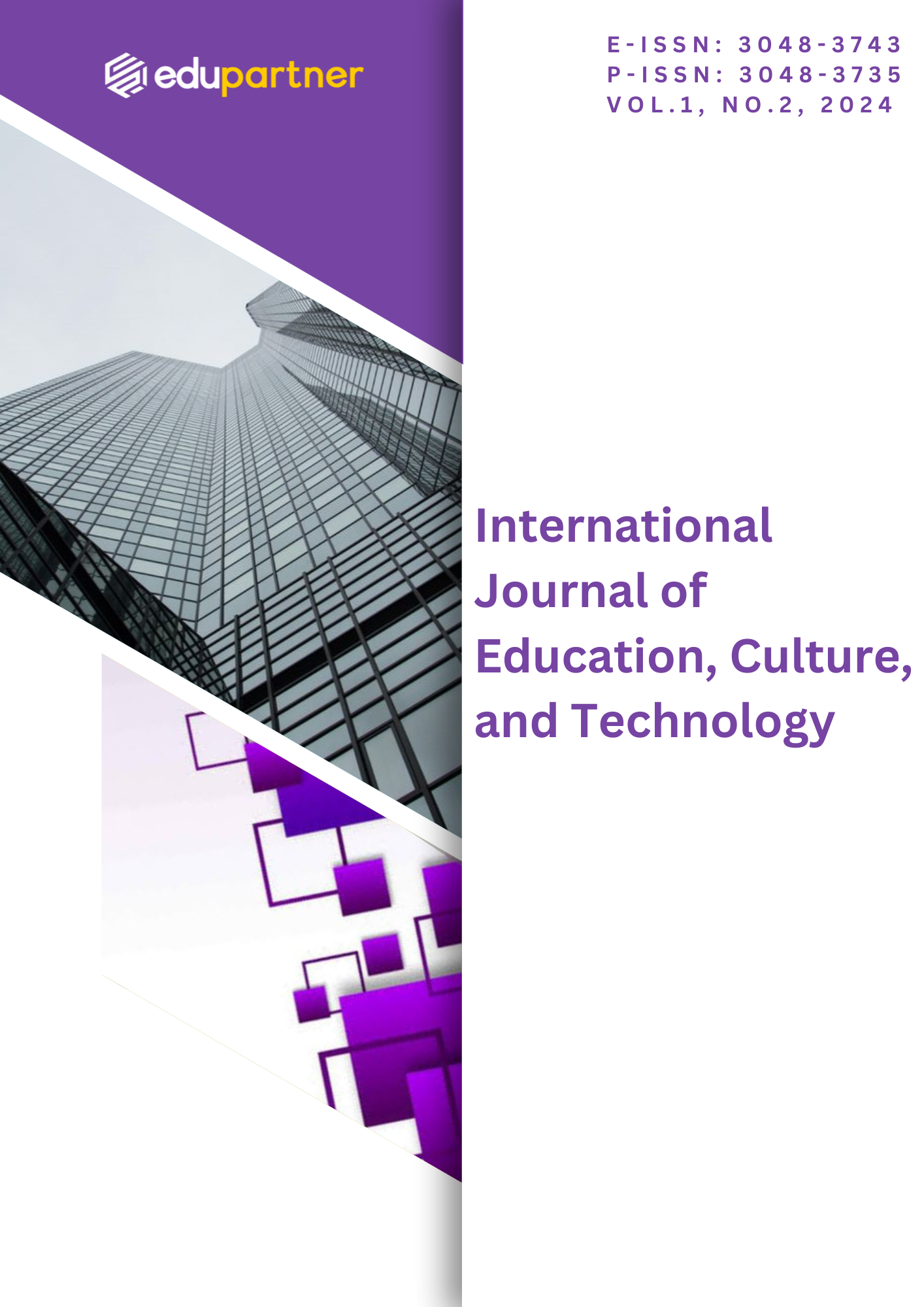A Figurative Language Found in the Best Song of Imagine Dragons 2023
DOI:
https://doi.org/10.69747/edu-ij.v1i2.112Keywords:
Figurative Language, Imagine Dragons 2023, The Best SongAbstract
The objectives of this research are to find out the types of figurative language utilized in the best song of imagine dragons 2023 and to find the contextual meaning of the figurative language utilized in the best song of imagine dragons 2023. The method utilized is qualitative descriptive in which the researcher acts as the main and supporting instrument like documentation and tabulation which are utilized to collect all data from all the songs that have been collected in the best song of Imagine Dragons 2023. The results of this research shows that there are 9 types of figurative languages such as metaphors, similes, oxymoron, hyperbole, metonymy, synecdoche, personifications, rhetorical questions, anaphora in the best song of imagine dragons 2023. In this case, metaphor is the most dominant figurative language. Therefore, it can be concluded that the best song of imagine dragons 2023 has a lot of figurative language to enhance, beautify, and provide a more meaningful message for readers. Besides that, researcher also recommendation for lectures or teachers in learning related to figurative language which should provide the basics before analyzing songs such as identifying themes and messages to be conveying. Then, for students that want to study figurative language in song to be able comprehend or identify various types of figurative language such as hyperbole, simile, metaphor, personification and oxymoron. Lastly, for researcher who is interested or want to research this topic, suggestion to utilize an interdisciplinary approach for combining literary analysis and musicological studies to gain a deeper comprehending of the impact of figurative language in music.
References
Abdul-Jabbar, S. S., & Farhan, A. K. (2022). Data analytics and techniques: A review. ARO: The Scientific Journal of Engineering, 45–55. https://doi.org/10.14500/aro.10975
Bagir, M., & Wiwoho, G. (2022). An analysis of figurative language in Blurryface and Trench albums by Twenty One Pilots Band. LINGUAMEDIA Journal, 3(01). https://doi.org/10.56444/lime.v3i01.2883
BK, A. B. (2020). Speaking is healing: Dalit women gain a voice through a charismatic healing movement in Nepal. CASTE: A Global Journal on Social Exclusion, 1(2), 73–90. https://doi.org/10.26812/caste.v1i2.171
Burieva, N. G. (2022). The concept and its linguistic status. American Journal of Philological Sciences, 03(01), 19–24.
Dewi, E. N. F., Hidayat, D. N., & Alek, A. (2020). Investigating figurative language in “Lose You to Love Me” song lyric. Loquen: English Studies Journal, 13(1), 6. https://doi.org/10.32678/loquen.v13i1.2548
Haryoko, S., Bahartiar, & Arwadi, F. (2020). Analisis data penelitian kualitatif. Jurnal Ilmiah, 409–420.
Hulu, D. A., Nova, E., Sembiring, B., Widya, N., & Tarigan, P. (2021). An analysis of figurative language in Ariana Grande’s album “Thank U, Next.” English Education and Art (LEEA) Journal, 4(1989), 2597–3819. https://doi.org/10.31539/leea.v4i2.1954
Ibrahim, I., Akib, M., & Hasyim, R. (2019). The analysis of figurative language in “Endless Love” song lyric. Jurnal Pendidikan, 8(2).
Irviani, Y. (2022). Analisis penggunaan dan makna diksi lagu “Asmaralibrasi” Soegi Bornean. Jurnal Linguistik, 1(3), 86–94.
Islam, S. (2017). Reliability and validity testing of research instruments. International Journal of Research Methodology, 4(12), 1081–1094.
Lahiri, S. (2023). A qualitative research approach is an inevitable part of research methodology: An overview. Research Methodology Journal, 5(3), 1–13.
Language, J. O. F. (2023). The figurative language of sarcasm and satire on the song “WTF Do I Know” by Miley Cyrus and “Reckless” by Madison Beer. Journal of Figurative Language, 4(3), 84–90.
Magsamen, S., Golden, T. L., Towriss, C. A., & Allen, J. (2023). The impact thinking framework: A process for advancing research-to-practice initiatives in neuroaesthetics. Frontiers in Psychology, 14(April). https://doi.org/10.3389/fpsyg.2023.1129334
Murrock, C. J., & Bekhet, A. (2016). Concept analysis: Music therapy. Journal of Music Therapy, 53(3), 221–235.
Nadeak, A. L. (2023). ELTR Journal, e-ISSN 2579-8235, 7(2), 86–100.
Parkheta, L., Studies, U., Tychyna, P., & State, U. (2023). Features of studying lyrics in literature lessons. Language and Literature Studies Journal, 14(045), 72–78.
Setyawan, M. Y. (2022). Urgensi makna kontekstual (Dalālah Siyāqiyyah) dan teori kontekstual (Naẓariyyah al-Siyāq) dalam penelitian semantik. Insyirah: Jurnal Ilmu Bahasa Arab dan Studi Islam, 5(1), 26–38. https://doi.org/10.26555/insyirah.v5i1.5156
Stadtländer, C. T. K.-H. (2009). Qualitative, quantitative, and mixed-methods research. Microbe Magazine, 4(11), 485–485. https://doi.org/10.1128/microbe.4.485.1
Vi, C. W. G. (2016). Framework See-Think-Do as a tool for crowdsourcing support – Case study on crisis management. ISPRS Archives, XLI(July), 2014–2017. https://doi.org/10.5194/isprsarchives-XLI-B6-13-2016
Werner, V. (2019). Lyrics and language awareness. Journal of Music and Language Awareness, 7(1), 4–28.
Yunanda, F., Pardede, Y. K. P., Wati, N. E., Deaparin, A. S., & Tafonao, A. E. K. (2021). The analysis of figurative language in song lyric by Idina Menzel. Jurnal Basataka (JBT), 4(2), 129–138.



